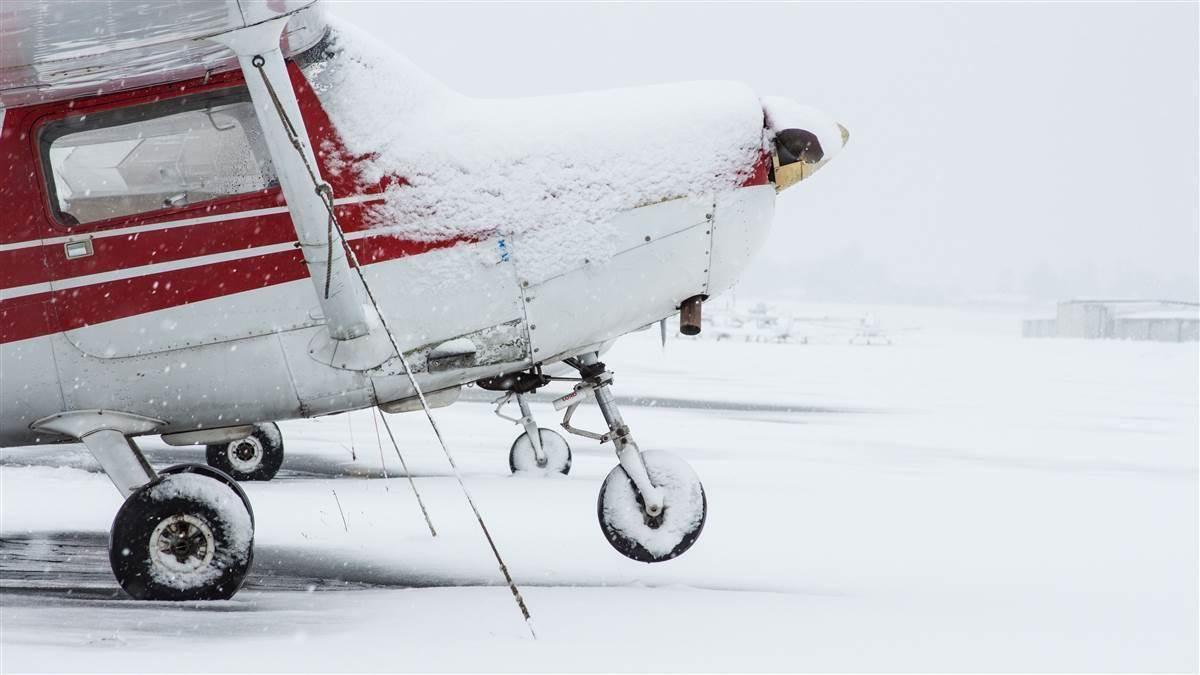
ASI News
Ice on the deck
Learning about the hazards of icing
By Alicia Herron
Any amount of ice on a light GA airplane is a big deal, and as we inch towards winter, now is a good time to examine the hazards of icing and some tips to deal with them. Even if you’re flight training in a historically snow-free area, the freezing level can drop dramatically in winter. Learning about the hazards of icing now will better prepare you to safely explore new skies (where icing may be a regular factor) after you pass the checkride.
One of the major hazards of ice is how it affects our wing’s ability to make critical lift. Ice or frost accumulations disturb the smooth airflow over a wing and increase drag. When you add power to compensate for the additional drag, and lift the aircraft’s nose to maintain altitude, the angle of attack increases, allowing the underside of the wings and fuselage to accumulate additional ice. Accumulations no thicker or rougher than coarse sandpaper on the leading edge and upper surface of a wing can reduce lift by as much as 30 percent and increase drag by as much as 40 percent. Because of this, the airplane may stall at lower angles of attack and at a much higher one-G airspeed than normal.
Loss of lift isn’t the only problem. Ice accumulates on every exposed frontal surface of the airplane—not just on the wings, propeller, and windshield, but also on the antennas, vents, intakes, and cowlings. Ice builds in flight where no heat or deicing boots can reach it, and it can cause antennas to vibrate so severely they break. In moderate to severe conditions, a light aircraft can become so iced up that continued flight is impossible.
Here are some tips to help deal with icing:
- Any amount of structural icing is hazardous.
- Conduct thorough preflight planning and include backup plans.
- Ensure the aircraft is completely free of frost, snow, and ice before departure.
- Get out of icing conditions immediately, as soon as you suspect or see ice forming on the aircraft.
- Depending on the cloud type, icing can be worse in the top of the clouds, so only climb if you’re absolutely certain you can climb over the top.
- Give and use PIREPs to improve weather decision-making.
- If you don’t already, add checking the freezing level to your preflight planning to help avoid icing conditions.
- Take ice seriously. Even a small amount can dramatically change the way your airplane flies, and if not dealt with immediately, can become a major and potentially unrecoverable problem.
Learn more about icing with this safety spotlight: airsafetyinstitute.org/spotlight/precipandicing
NEW FROM ASI
There I Was: Distracting engine failure
 If you’ve called AOPA’s Pilot Information Center, you’ll recognize this episode’s guest: pilot and AOPA employee Jon Gandy. As an aviation technical specialist from the AOPA Pilot Information Center, Gandy brings a wealth of knowledge, and he shares a story in which he experienced a partial engine failure in a Piper PA–31 Navajo, which created a distraction and caused an inadvertent gear-up landing.
If you’ve called AOPA’s Pilot Information Center, you’ll recognize this episode’s guest: pilot and AOPA employee Jon Gandy. As an aviation technical specialist from the AOPA Pilot Information Center, Gandy brings a wealth of knowledge, and he shares a story in which he experienced a partial engine failure in a Piper PA–31 Navajo, which created a distraction and caused an inadvertent gear-up landing.
 Former Flight Training magazine aviation adventure columnist Greg Brown is bringing some of his most popular tales to life in the recently released
Former Flight Training magazine aviation adventure columnist Greg Brown is bringing some of his most popular tales to life in the recently released 

